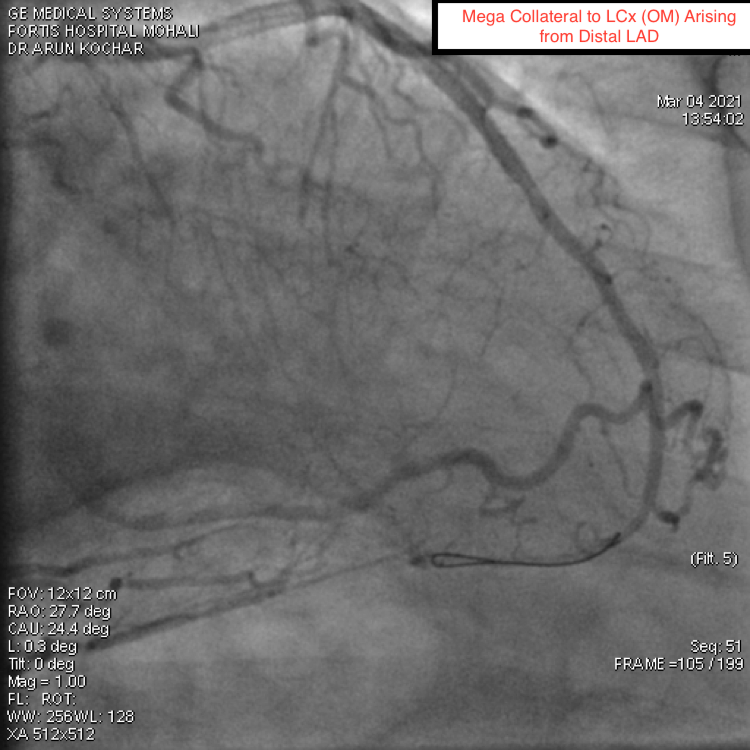Lots of interesting abstracts and cases were submitted for TCTAP 2021 Virtual. Below are accepted ones after thoroughly reviewed by our official reviewers. Don’t miss the opportunity to explore your knowledge and interact with authors as well as virtual participants by sharing your opinion!
TCTAP A-025
Presenter
Arun Kochar
Authors
Asees Paul Singh1, Hiteshi K.C. Chauhan2, Arun Kochar1, Pankaj Garg3
Affiliation
Fortis Hospital, India1, Fortis Healthcare Limited, India2, Garg Fistula Research Institute, India3
View Study Report
TCTAP A-025
Chronic Total Occlusion
Assessment of Coronary Collaterals and Its Clinical Determinants in Patients with Total/Subtotal Coronary Artery Occlusion – An Observational Study Conducted at a Tertiary Care Center in India
Asees Paul Singh1, Hiteshi K.C. Chauhan2, Arun Kochar1, Pankaj Garg3
Fortis Hospital, India1, Fortis Healthcare Limited, India2, Garg Fistula Research Institute, India3
Background
Coronary collateral arteries develop and mature in response to ischemia caused by severe coronary stenosis or occlusion. However, the determinants of collateral formation and its role - especially in total/subtotal coronary occlusion - are poorly understood. A succinct insight into collateral formation and its determinants would be a step forward towards delineating future therapeutic strategies focused on the promotion of collateral growth and functionality.
Objectives:
Objectives:
Methods
The coronary angiograms of 527 adult patients, who underwent this diagnostic procedure in the time period from June 2018 to July 2020 at our tertiary care center in India, were studied. 50 patients of this 527-patient cohort, who had subtotal and total coronary artery occlusions, were included in our study with the aforementioned objectives.


Results
Of these 50 patients, 37 were male and 13 were females. The baseline parameters, past medical history and clinical presentations are tabulated below.
Table 2: Association of Grades of Collaterals with Risk Factors and Clinical Presentation
| Variables | Values |
| Baseline Parameters | |
| Age, mean (SD) | 54.14 ± 7.45 years |
| Male, n (%) | 37 (74) |
| Female, n (%) | 13 (26) |
| Medical History, n (%) | |
| Diabetes Mellitus | 15 (30) |
| Hypertension | 10 (20) |
| Smoking | 7 (14) |
| Prior CAD | 6 (12) |
| Multifactorial | 4 (8) |
| No risk factors | 5 (10) |
| Clinical Presentation, n (%) | |
| STEMI | 24 (48) |
| NSTEMI | 6 (12) |
| UA | 5 (10) |
| CSA | 15 (30) |
| | |
| Variables | Inadequate | Adequate | P value |
| Diabetes mellitus | 14 | 1 | 0.003 |
| Hypertension | 3 | 7 | 0.02 |
| Smoking | 6 | 1 | 0.16 |
| Prior CAD | - | 3 | 0.02 |
| STEMI | 20 | 4 | 0.003 |
| NSTEMI | 3 | 3 | 0.51 |
| UA | 4 | 1 | 0.38 |
| CSA | 2 | 7 | 0.007 |
Conclusion
Diabetics have a lower prevalence of adequate collaterals. Adequate collateral formation is seen in patients with hypertension. Patients with chronic stable angina and with prior CAD show a significant prevalence of adequate collaterals, suggesting that ischemia could be responsible for the induction of collateral growth. We need larger studies on collateral formation and its determinants, so that future therapeutic strategies can target the promotion of collateral growth and functionality.


